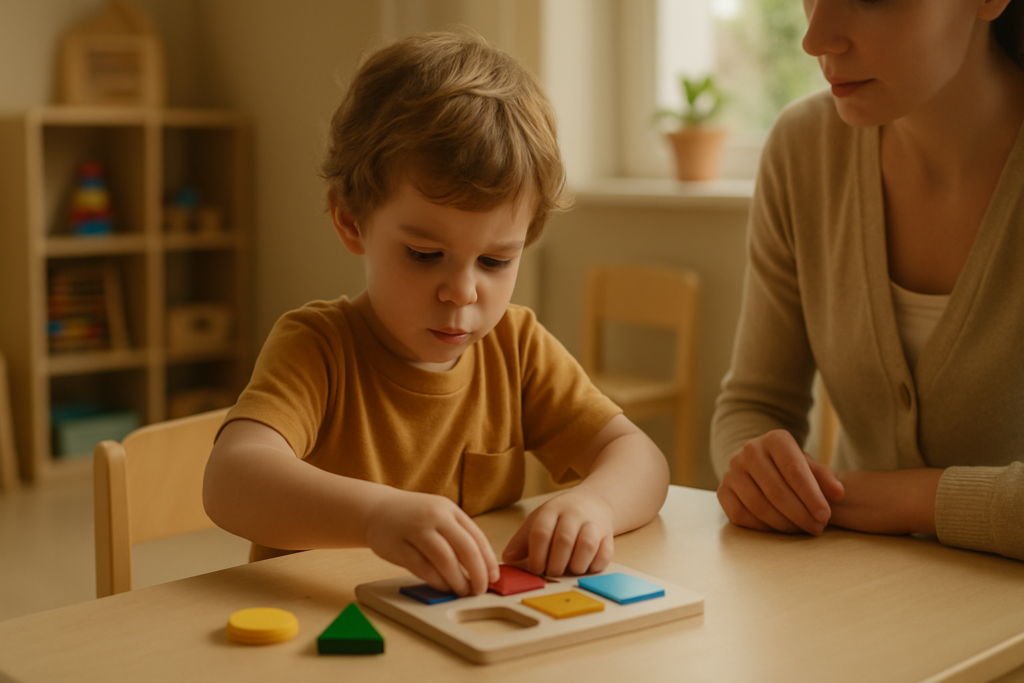
Between the ages of 3 and 5, preschoolers undergo a remarkable cognitive transformation, gradually realizing the power of their minds to think, reason, and organize their behavior.
During this period, significant strides are made in the development of executive functions, a set of skills that underlie higher-level thinking and problem-solving.
Executive functions can be categorized into three primary abilities:
1. Inhibitory Control: This ability enables children to resist impulses, focus attention, and filter out distractions. For example, a preschooler may need to resist the urge to grab a toy from another child or to stay focused on a task, even when there are other enticing activities.
2. Working Memory: This involves the ability to hold information in mind and manipulate it to solve problems. For instance, when a child is asked to add 2 + 1, they must hold the numbers « 2 » and « 1 » in their working memory, recall the addition procedure, and then calculate the sum.
3. Cognitive Flexibility: This refers to the ability to switch between tasks, think flexibly, and adapt to changing circumstances. A child might need to switch from playing with blocks to listening to a story or adjust their strategy for solving a puzzle if their initial approach doesn’t work.
Pippo is an excellent game to encourage the development of skills in all three broader ability categories. While playing, children must engage in selective attention as they visually scan the cards, searching for the specific color or animal that is missing. This ability, which emerges around the age of 3, allows children to focus on relevant details within a complex visual scene.
By the age of 5, preschoolers become even more adept at ignoring irrelevant information. For example, if the missing color is “yellow”, they will quickly eliminate cards featuring other colors and concentrate on those with animals in yellow. Working memory is also activated, as the child must retain the information about the missing color in their mind while scanning the cards for a match.
Older children might be able to retain both pieces of information—the missing animal and color—and look specifically for a « yellow dog ». While doing this, they also need to exercise inhibitory control, resisting the impulse to pick up the first yellow animal they see and instead searching for the specific combination. As the game progresses, children can practice cognitive flexibility by switching between strategies, such as focusing on the missing color first and then the animal, or vice versa. This ability to adapt their approach helps them become more efficient problem-solvers.
By developing these executive functions, preschoolers lay the foundation for numerical cognition, including skills such as counting, number recognition, and basic arithmetic.
During their third year of life, preschoolers begin to develop a strong foundation in number sense. They learn to recognize and mentally represent small numbers (0-10 or 20), matching them to corresponding quantities. They can count by ones up to 10 or 20 and understand the order of numbers, allowing them to compare quantities (bigger/smaller). Starting from 4 years old, many preschoolers are capable of learning basic arithmetic operations like addition and subtraction within the range of 0-10.
Potions mathématiques, recommended for children aged 3 and up, is a game that nurtures preschoolers’ early math skills, including enumeration and number representation. By following a recipe and adding ingredients to their potion, children engage in counting. As they progress to the second and third levels, they develop a deeper understanding of number order and mental representation.
Dégueulasse is an excellent game that simultaneously fosters both numeric skills and executive functions. As children roll the dice, they must recognize the number, remember the outcome, and scan the available cards for a match. Younger children may need to count the elements on each card using their fingers. In doing so, they might forget the number they rolled, requiring them to inhibit their impulse of grabbing a card and recheck the dice. As they become more experienced, children may shift their strategy from counting to visually estimating the quantity of elements on each card. This transition demonstrates the development of cognitive flexibility.
The game progresses through three levels, starting with number recognition and quantity matching, and gradually advancing to addition skills. While there are recommended age ranges for each level, it’s essential to follow your child’s individual pace and interests. From a developmental perspective, children can master the first two levels by age 5. Consequently, the third level, involving more complex addition, can be introduced with adaptations like using two dice numbered from 1 to 3.